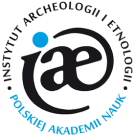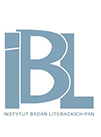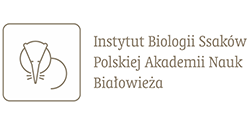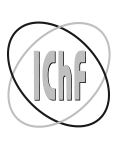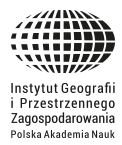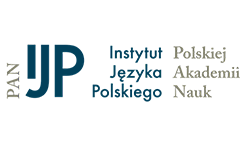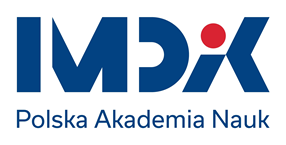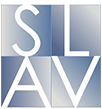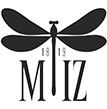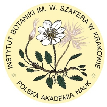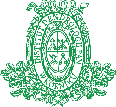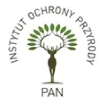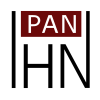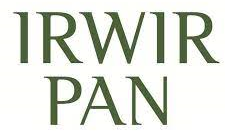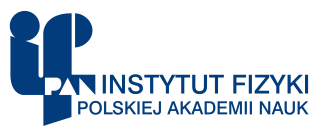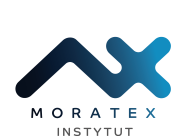
- A single volume of a handwritten Bible of Czech provenance is located at the Archdiocesan Archives of Gniezno. The Bible was created in 1414 and its signature is BK Ms 142. This article presents and analyses the book in comparison with the rest of the library manuscripts present at the Archdiocesan Archives. The Czech Bible is a part of a small subset of biblical codices and an equally small group of Czech codices. The article concludes with a few research questions, connected to, among others, a paleographic study and the examination of the traditions of the biblical texts.
- The activity of children’s nests in the eastern part of the Warsaw district was associated with the displacement of Polish children from the Zamość region by the Germans in the winter between the end of 1942 and beginning of 1943. Many of them were separated from their mothers (parents) during racial selection in the transit camp in Zamość and deported, in six transports to three poviats of the district: Garwolin, Siedlce and Mińsk Mazowiecki. After being placed in “foster families” in this area, there was a need to provide the displaced children with care during the day, in the absence of their working caregivers (including mothers), or in the absence of proper care and entertainment. Local agencies of the Main Welfare Council came to the rescue by organizing six children’s nests in: Żelechów, Łaskarzew-Osada, Parysów, Stoczek Łukowski, Mordy and Łosice. Their aim was not only to manage their free time in the absence of working caregivers, in various forms, e.g. fun, education, etc., but also to improve their health, also by feeding displaced children. This was possible thanks to many months of financial and material support from the “Care Clubs” for displaced children, established by employees of institutions and enterprises from Warsaw. The mood of fun and joy during kindergarten classes meant that children from the Zamość region could, at least for a short time, forget about the difficult reality of the occupation and oft en forget about separation from their loved ones. After the liberation of these areas in the summer of 1944, the children’s nests were most likely liquidated and the displaced children left for their hometowns. <br>
- Adolf Henryk Rondthaler (1875–1941), pastor of the Evangelical-Augsburg Church, was born in the family of German immigrants settled in Polish-speaking lands in the 19th century. Having graduated from the University of Dorpat, he became an evangelical priest and religious education teacher in the Kingdom of Poland. Since 1918 he lived in Warsaw and ran the magazine “Ewangelik”, wrote articles and books, and also taught in an evangelical school named after Mikołaj Rej. In 1921 he became head teacher and introduced his own education system. It was inspired by Alfred Adler’s psychology which Rondthaler popularized in his articles. During World War II he was involved in secret teaching. He died in Warsaw from serious illness. <br>
- The aim of the article is to present the state and the problems of the schools of the Commission of National Education in the Samogitian Department. The department, farthest to the north, was the smallest in terms of territory and the Duchy of Samogitia itself was ethnically and religiously diverse. The problems of the department, as well as most of its schools, concerned the poor condition of the buildings, the lack of teaching aids and the occasional insubordination of teachers and students. <br>
- The aim of the article is to reconstruct the status of a human embryoin the Old Testament within the context of Ancient Middle East cultures. Thestarting point of the conducted research is the refl ection on the Old Testamentaryview of a human being, It also discusses law codifi cation: Babylonian, Hittite,and Assyrian. The analysis of views concerning nasciturus in the given study isinextricably connected with a social patriarchal system that dominated amongall the cultures of the ancient Middle East. A comparative approach to the issueallows a greater understanding of the genesis of the refl ection on the status ofa human embryo.
- The aim of the article is to show the most important facts of the life and work of Professor Ludwik Wertenstein (1887–1945). He was a student of Maria Skłodowska-Curie and Ernest Rutheford, a de facto supervisor of the Mirosław Kernbaum Radiological Laboratory of the Warsaw Scientific Society (1914–1939) and a highly regarded science communicator. The main scientific achievement of Wertenstein was his discovery of inelastic collisions of neutrons in 1934.
- The aim of the article is to show the role of the Polish legation in Bern in the emergence and development of Polish higher education in Switzerland from 1940 to 1942 on the basis of diplomatic cables exchanged with the Polish government in London. After the fall of Poland in 1939, some of the Polish troops were evacuated to neutral Switzerland where they were interned. From that moment on, the head of the mission in Bern, Aleksander Ładoś, continued his efforts to provide soldiers with access to education. The soldiers were deployed in specially created camps and it was there that the education system at the upper secondary school and university levels was organised for them. Students were divided according to age, education and skills. The camp education was subject to administrative and scientific supervision by the relevant Swiss state and university authorities. This education system received financial support not only from Switzerland itself but also from many international institutions, the Polish diaspora, the Polish government and private individuals. An educational camp magazine was also published. <br>
- The aim of the paper is to present Jan Konopnicki’s contribution to the development of pedagogy as a scientific discipline at Krakow’s universities in the 1960s, with particular emphasis on experimental pedagogy, special needs education and comparative education. Jan Konopnicki was an outstanding educator, psychologist and scientist. For many years he was denied promotion and the title of professor. His contribution to the development of experimental pedagogy as well as special needs education and comparative education is unique. Polish pedagogy knows too little about his achievements as a researcher and organizer of education. Thanks to his efforts, for the first time in Poland, extramural studies in special needs education were opened at the Pedagogical University of Krakow. The research used the analysis of documents, archival resources and content analysis of Konopnicki’s original publications and thematic studies. <br>
- Albert Ines (1619–1649) was one of the most important Polish-Latin poets of the 17th century. The subject of this text is the handling of the themes of medicine, health and disease in his work on the example of odes (“Lyricorum centuria”) and the collection of epigrams. The article analyses his disparaging jokes about physicians, popular in Roman and Greek tradition, and onomastic jokes about health and caricatural imagery of the body, i.e. obesity, lack of teeth, baldness or wigs. It also points at the figures of speech pertaining to the portrayal of the frailty of the human condition. <br>
- Although the period of the constitutional Kingdom of Poland (Congress Poland) between 1815 and 1830 was relatively short, it was marked by significant events in the history of the reception of classical antiquity in Polish architectural education. The government of ‘resurrected’ Poland was interested in a wide-ranging reform of the country and society, including the development of the local built environment. Such architectural officials as Chrystian Piotr Aigner, educated and trained at aristocratic courts, proved to be well-prepared for the most prestigious public commissions. However, their specific competencies and experiences made them rather unfit for contemporary university careers since the lecturers were expected to teach not artists but ordinary building engineers. The public demand for architects conversant with classical orders and their exquisite ornamentation was much smaller than for those who specialised in plain but technically correct constructions. It was the development and wide dissemination of ordinary building which was of prime importance to the Kingdom’s government. Consequently, the classical architectural heritage was rather disregarded in contemporary academic curricula. Nevertheless, the growing number of affluent landowners after 1825 contributed to the rising interest in the classical heritage in the academic discourse already before the dissolution of the constitutional Kingdom. Initially, it was an academic manual by Henryk Marconi, published in 1828, which promoted the idea of classical orders as the pillar of good architecture. The book was followed by a treatise by Adam Idźkowski, originally announced in 1830, but eventually published only after the November Uprising, in 1832. The book also underscored the validity of the classical heritage, simultaneously presenting a more pluralistic idea of beauty in architecture by treating classicism on equal terms with the medieval tradition. <br>
- Among the many available sources on the history of education, special attention should be paid to the audit reports of inspections carried out by school inspectors, and in the case of secondary schools’ audits conducted by inspectors on behalf of the education board. In the case of the City Co-educational Humanistic Jr. High School in Ostrzeszów, four such documents have been preserved. Their analysis gives a certain, albeit fragmentary picture of the operation of this school during the afore mentioned period. The information contained in these documents makes mention about the school facilities, the number of teachers and the level (quality) of lessons, students (including their number in the school and in each individual classes). The inspectors also noted in the reports information on social developmental studies conducted at the school, as well as information on youth organizations. <br>
- The article aims to analyse the life of Jerzy Jakubowski (born in 1887 in Warsaw, died in 1967 in Wrocław), a doctor and a communist, against the background of political and social events taking place in Poland and Europe at the end of the 19th and the beginning of the 20th century. It is also the story of a man who was not at peace with his roots and did everything he could to erase them from history and the memory of posterity. His endeavour could be called an escape from identity. Even before the Second World War, after returning to Poland from Soviet Russia, he changed his name to Maurycy Jerzy. During the German occupation, he took the surname Jakubowski and kept it after the war. Therefore, in the article, he appears as Jakubowski (Muszkatenblit) from the moment he received false papers. Similarly, his son Mikołaj used Aryan papers for the name of Mokrzycki during the Second World War and did not return to his family name afterwards. The prewar discrimination and restriction of the rights of Jews pushed them both towards communism, which gave a chance to everyone regardless of ethnic origin. The article is also an attempt to reconstruct the life of a communist ‘old-timer’ for whom loyalty to the party was of paramount importance. Although he accepted the dissolution of the Communist Party of Poland and the murder of Polish communists by Joseph Stalin with a heavy heart, it was only after the political thaw of 1956 that he had the courage to voice his doubts about these purges. The main source used by the author is Jerzy Jakubowski’s own account of his ‘revolutionary’ activity from 1905 to 1967, recorded shortly before his death, between 27 April and 5 August 1967. It is now held in the Archives of Modern Records in Warsaw. <br>
- The article aims to discuss the importance of the cinematograph in the mass culture at the beginning of the 20th century in the Kingdom of Poland, with particular emphasis on its educational impact. It is equally important to present “moving pictures” as a modern teaching resource. In the article the methods of historical and pedagogical research were used, including the philological (lexical) method for the analysis of press sources. As a result of the analysis of archival materials and journalism – weekly magazines and daily press, it was established what opinions were formulated about the new teaching resource. Examples of the activities of “pedagogical cinematographers” in the Congress Kingdom of Poland at the beginning of the 20th century were indicated. The areas of education in which fiction and popular science films were used were presented. Their application in school and out-of-school education was described, including the education of children, adolescents and adults. <br>
- The article aims to outline the problem of communist indoctrination in schools for Jewish children and youth during the Stalinist period in Poland. The study focuses on the legal basis of education for national minorities, educational and upbringing goals and ideals as well as methods of implementing ideological assumptions resulting from systemic changes associated with the communist takeover of power in Poland. Moreover, forms of educational influence on children and adolescents as well as staffing issues are discussed. The study is based on archival materials obtained from the Archives of Modern Records in Warsaw (collections of the Ministry of Education and the Polish Workers’ Party), the State Archives in Legnica, the State Archives in Wrocław, the Archives of the Social and Cultural Association of Jews, the Archives of the Jewish Historical Institute and others. <br>
- The article aims to present areas of research in the project about the aspirations and identities of governesses in the Kingdom of Poland, 1864–1914. The article discusses both secondary and primary sources, the latter in the form of about 200 personal memoirs from the time in which homeschooling for girls is mentioned. The article makes a preliminary overview of their content, pointing to the intended routes of interpretation and forming a research hypothesis. It discusses the liminal position of the governesses in the context of class and gender relations. <br>
- The article aims to present selected source texts, showing the determinants of student health and the development of school medicine in Poland from the end of the Second World War to the end of the 1940s on the example of schools operating in the area under the administrative and pedagogical supervision of the School District Board in Łódź. The study contains a general introduction, taking into account the demographic, health and social characteristics of school-age children and adolescents. <br>
- The article aims to present the content of three rulebooks drawn up in French for students and teachers of the Polish Oriental School in Istanbul in 1766, 1772 and 1778. These materials come from the Princes Czartoryski Library in Kraków and the Popiel Collection in the Central Archives of Historical Records in Warsaw. The first instruction was drawn up in the year of the establishment of the Polish Oriental School [Jeunes de langues] on the Bosphorus, namely in 1766. It was written by Tomasz Aleksandrowicz and Karol Boscamp-Lasopolski in accordance with the recommendations received earlier by these two diplomats from King Stanisław II August. Another regulation was created in His Majesty’s Cabinet six years later, in 1772. Its author was Jacek Bartłomiej Ogrodzki, a close associate of the monarch. The last regulation known from literature was created on the occasion of Karol Boscamp-Lasopolski’s legation to Turkey in 1778. The changes in the recommendations for students and teachers over the course of 12 years show the obstacles and difficulties faced by the creators of the first Polish school for dragomans. <br>
- The article aims to present the process of creating and organising education in Wierzbnik, now part of Starachowice, from the city’s foundation until 1915, ie the onset of the Austrian occupation and the beginning of the reconstruction of Poland. It discusses the education policy of the Russian authorities, examines the role of teachers in the local community and their social position and shows the impact of education on society and its growing literacy. The research was based on sources from the State Archives in Radom and Kielce. <br>
- The article aims to recreate the unknown origins of the Society for Academic Aid, especially its library. The study, based on the source materials held in the Polish Library in Paris whose creation is closely related to the history of the described institution, begins with a concise presentation of the Polish emigration in France between 1831 and 1833, its number, dispersion and spiritual condition. The formation and activities of the Society were presented not as a top-down idea of the conservative camp, a stance prevalent in the scanty literature on this subject, but a bottom-up initiative of the entire Polish diaspora, despite its political divisions. On the other hand, responsiveness of the members of the Society, led by Prince Adam Jerzy Czartoryski, was shown as well as their flexibility in relation to the changing cultural and academic needs of the Polish emigration. On the basis of correspondence sent to the Society from all over France and the first minutes of its meetings, the most urgent needs of Polish emigrants in the sphere of reading and learning were reconstructed and the purposefulness of the requests for a specific reading was shown. Presenting both individual and collective educational and reading expectations, special attention was paid to the dominant aspect of self-education and grassroots initiatives of emigrants deciding to continue their studies in Paris, which finally led to the creation of the library and contributed to the gradual creation of a dual Polish-French émigré identity. <br>
- The article aims to show the changing methods of discouraging seminarians, who became soldiers in military units, from continuing their priestly education. Unpublished letters Warsaw seminarians sent Władysław Miziołek from military barracks serve as a source of analysis. At the time, Miziołek was the rector of the Metropolitan Higher Theological Seminary in Warsaw; in 1969, he became an auxiliary bishop of Warsaw. <br>
- The article aims to show the patterns and changes that occur in teaching about continents, countries and their inhabitants in school textbooks at the level of primary school education. It analyses selected textbooks for Year 1–3 students, published in the 21st century, with particular emphasis on the most popular series. The study presents examples of characteristic narratives that appear in textbooks, with an indication of which of them are prevalent and which appear only occasionally. It exposes the problems of the contemporary Polish school, such as Eurocentrism, Polonocentrism and the reproduction of stereotypes about the ‘Others’. Although the official message in the core curriculum and school textbooks is unequivocal: everyone, regardless of skin colour or nationality, is equal, in practice, the curriculum content and textbook illustrations clearly divide the world into wealthy and modern ‘Us’ and the poor and backward Third World. The ‘Others’ are presented as an exotic, even wild element, needy of assistance from the citizens of the civilised countries. The author draws attention to the dangers associated with underestimating the richness of the multiethnic and multicultural world and failing to notice the diversity of its population, different cultures and educational systems present on different continents and in different countries. <br>
- The article aims to showcase Polish Roman Catholic Bishop Kazimierz Romaniuk as an academic, biblical scholar, one of the translators of the Millennium Bible and the sole translator of the Warsaw–Praga Bible. He authored numerous monographs, academic studies and other writings devoted to biblical topics and lectured at the Catholic University of Lublin, the Academy of Catholic Theology, the Pontifical Faculty of Theology and the Metropolitan Higher Theological Seminary in Warsaw, of which he became the rector. The study focuses on the course of the scholar’s education and career as well as his academic achievements and significance in the 20th-century Catholic biblical studies in Poland and the international biblical criticism. <br>
- The article analyses the most important threads picked up by the authors of the collective work titled ‘Wychowanie i edukacja w kulturach, religiach i światopoglądach’ [‘Upbringing and Education in Cultures, Religions and Worldviews’]. They reflect on how and to what extent religious, ideological and cultural factors determine the approach to both institutional and home education in communities from different parts of the world. They also present various educational models and value systems developed on the basis of ethnonational and cultural specificity. <br>
- The article analyses the sources pertaining to the marriage of Prince Hieronim Florian Radziwiłł and Magdalena Czapska, which ended with an annulment in 1753. It shows the problem of infertility and the absence of the heir to the vast Radziwiłł estate. The article analyses the letters by both spouses, the personal diary of the prince and the letters of Konstancja Czapska, Magdalena’s mother. It considers the presentation of information deemed to be taboo in the Old Polish culture. While Konstancja Czapska maintains a traditional stance by claiming that a child is the strongest bond for the marriage, the prince underlines the importance of mutual affection. That kind of opinion was evidence of gradual changes of mentality taking place in the first part of the 18th century. <br>
- The article analyzes the structure of a specific group of Jesuits, i.e. the so-called magistri. During their religious formation, these younger Jesuits taught humanistic courses addressed to secular youth. The author applies an innovative methodology, consisting of the statistical analysis of the data from personal catalogues of the Polish and Lithuanian Provinces by means of RStudio, an integrated development environment for statistical computing and graphics. In particular, the paper focuses on the number of magistri, their proportion related to the overall Jesuit population, and their evolution over time. It also represents their dispersion across various Jesuit houses, the relationship between the subjects they taught and the number of years they spent in the Jesuit Order before receiving that post. Finally, it considers the association of various teaching posts. Through the statistical analysis, the author verifies the historiographical thesis according to which a crisis occurred in the Jesuit school system during the second half of the 17th century. This crisis was overcome only in the 1740s as the reform of Jesuit education began. <br>
- The article comments on the therapeutical properties of the epigram (and other short, comical poetic genres). Laughter was considered one the best remedies for melancholy, the most serious of the psychosomatic syndromes in the diagnostics of humoral medicine, based on the ancient theory of four humours. Because of its direct influence on the spleen, i.e. the organ responsible for the secretion of black bile, laughter was supposed to alleviate melancholy. Epigrams, considered by Old Polish authors to be a poetic genre written “for the body”, were to be relaxing and listening or reading them, especially in a group of friends, was supposed to be a therapeutic medicinal practice. <br>
- The article concerns the life and work of Anna Tomaszewicz-Dobrska, the first woman practising medicine in the Kingdom of Poland. Her character, although indisputably important for the history of medicine and the history of emancipation, is little known. The only biography of Tomaszewicz-Dobrska, written by Zbigniew Filar, was published in 1959. In addition to presenting facts from her life, the article raises issues related to the pioneers of medical studies from today’s Poland, the situation of female students at foreign universities in the 19th century, as well as the state of medical knowledge in the field of reproductive health at that time.
- The article deals with issues related to the cultural phenomenon of an ailment called a Polish plait (plica Polonica). The article is devoted to the first stage of interest in this disease in Europe in the 17th century. The main subject of interest is the extensive treatise “De plica quam Poloni gwozdziec, Roxolani kołtunum vocant liber”, whose author was a well-known professor of medicine from Padua, Ercole Sassonia (Hercules Saxonia). Literary texts written in Latin also indicate that medical treatises were addressed to recipients who represented similar interests and education. <br>
- The article deals with the implementation of Józef Piłsudski’s Sanation model of ‘state education’ in private primary schools with German as a medium of instruction, which in the Second Polish Republic in the 1930s functioned in south-western Greater Poland. It was a border area, critical for national security, culturally and historically bound by Polish–German relations. The schools belonged to individual lay people, United Evangelical Church communities or associations of the German national minority. The students, with few exceptions, belonged to the Lutheran Church. Audit reports filed by Polish school inspectorates prove that teaching, ie performance of teachers’ duties, was mainly influenced by current politics and Polish–German relations. Increased political tension in the second half of the 1930s resulted in a decline, though not universal, of ‘state education’, neglect of teaching the Polish language, history and geography, absence of Poland’s White Eagle emblem, separatist tendencies among the minority and a rise in ethnic hostility. Poor training of German teachers for teaching the Polish language was also revealed. Evangelical schools displayed worse results than others, which confirms the point advanced in historiography about the United Evangelical Church’s aversion to Poland. <br>
- The article deals with the issues of religious education, its transformations and geopolitical and ethnic conditions in Bielsko (Bielsko-Biała). It presents the ethnic structure of the city at the time when Poland regained independence as well as subsequent changes that took place during the interwar period and after the Second World War. Once in Poland, Bielsko embarked upon an accelerated process of Polonisation, which stifled German education and led to a rapid expansion of Polish education. In practice, German education was limited to religious education in the Bielski Syjon (Bielitzer Zion) district. Numerous restrictions along with the spread of fascist ideology led to the complete radicalisation of the German community, thus giving the impression that Evangelical education equals German education. Unfortunately, the stigmatisation of Evangelical education and evangelicals themselves as Germans led to persecutions and alienation attempts after the war. The fate of the Catholic school run by the School Sisters of Notre Dame was similar. The accusations of collaboration with Nazi Germany during the occupation and the postwar state policy towards the Catholic Church made the sisters cease their education agenda. Despite difficulties, religious education in Bielsko-Biała recovered quickly after the 1989 political transformation. Today, it is experiencing its renaissance. Schools run by various religious denominations, often scoring high in education rankings, are very popular among both students and parents. <br>
- The article describes late 19th- and early 20th-century Russian Orthodox Church schools in the Lublin Governorate of the Kingdom of Poland. The author reconstructs the history of such schools affiliated with the Radecznica monastery. They ceased to exist amid the First World War, during civilian evacuations of the Russian Orthodox people to Russia in 1915. The text raises the question of the Tsarist administration using the schools to advance Russification in Congress Poland. <br>
- The article describes selected evangelical schools in Warsaw from their establishment to the onset of the Second World War. Particular emphasis is placed on their history, characteristics and ecumenism. Their openness to other religions and the local community is made evident by the fact that the schools were attended by students of many Christian faiths as well as Jews, who sometimes exceeded the number of Protestant students. This study takes into consideration schools based at the Holy Trinity Lutheran Parish at Małachowski Sq and Kredytowa St as well as the Evangelical Reformed Parish school at Solidarność Av. These schools, though run by Protestants, functioned in a multinational and multiethnic environment as was typical for Warsaw in the 19th and early 20th centuries. <br>
- The article describes the activity of one of the three main underground education centres at the level of general secondary school operating in Lublin from 1939 to 1944. The functioning of the centre is shown taking account of the elements of educational policy and the realities of the local occupation situation. The text attempts to comprehensively describe the issue of secret teaching conducted in the discussed environment, which has so far been presented mainly in publications dealing with the participation of teachers in the underground education movement in the Lublin region or in memoirs. The article discusses the circumstances in which the underground education centre was established, the conditions under which it functioned, the participation of teachers and students in conspiratorial educational work, the didactic methods applied and the outcome of students’ involvement in secret teaching. The results of the quantitative balance have been obtained based on the analysis of various statistical data, including previously unknown materials stored in the Central Archives of Modern Records. To make a full picture of the activities of the ‘Union’ Centre, archival materials have also been used from the resources of the State Archives in Lublin, the Archives of the 3rd Union of Lublin Secondary School in Lublin, handwritten materials from the resources of Lublin libraries as well as published reports and memories of former teachers and students of the school. By compiling data from source materials and thematic publications, a list of 36 underground teachers cooperating with the ‘Union’ Centre has been made. <br>
- The article describes the process of creating the national history textbook of the Byelorussian SSR. It was comissioned in the 1920s and 1930s, but, for a number of reasons, i.e. due to the influence of Marxist ideology and repressions against Byelarusian historians, remained unwritten in the prewar period. The writing process was resumed at the final stage of World War II by historians from the Academy of Sciences of the BSSR. Russian historians also actively participated in the preparatory stage. They formulated conceptual approaches to writing the national history of BSSR. By 1954, after numerous discussions about its content, the textbook was approved by the Central Committee of the Communist Party of the BSSR and became the main account on the history of Belarus in the Soviet period. <br>
- The article discusses the circumstances of the establishment of mining education in the so-called New Copper Belt (also referred to as the Legnica-Głogów Copper Belt). It also presents a historical outline of this education, focusing on the period when the aforementioned schooling played the most important role in preparing personnel for the developing industry. It stresses that the Boleslaw Krupinski School Complex No. 1 is the only school in the region that has been providing preparation for mining qualifications continuously since 1963. It mentions the specifics of the school, including its cultivation of mining traditions. The text is based on archives as well as the school’s chronicle, anniversary publications and press. <br>
- The article discusses the concept of a cultural boundary put forward by the Austrian anthropogeographer Erwin Hanslik. Although it inspired a large group of Germanspeaking geographers, its creator was forgotten. The holistic philosophy of Hanslik and his distance to nationalism contributed to this, and it was not prevented by the innovativeness of the media he used. The scholar’s worldview was related to his biography and identity, based on his attachment to his native region and to the Habsburg monarchy, treated as a space for a multiethnic community shaped by nature. <br>
- The article discusses the content of the newest book by Elina Gertsman, ‘The Absent Image: Lacunae in Medieval Books’ (2021), dealing with the subject of lacunae and emptiness in medieval manuscripts. It illustrates the way in which this topic can be inscribed into the modern tendencies in manuscript studies. <br>
- The article discusses the genesis, creation and activities of probably the most active Italian women’s organization in the 20th century. Societá Pro Cultura Femminile operated for almost a hundred years in many areas of social activity, enabling hundreds of its members to become acquainted with European cultural heritage and providing an important impetus for Italian women’s fight for their rights. Much space was also devoted to the outstanding activist of the association and its long-time president, Lea Mei, thanks to whom the association developed harmonious and undisturbed, despite sometimes unfavorable political and social conditions. <br>
- The article discusses the life and work of the outstanding scholar and Polish patriot Roman Pollak in the field of Polish-Italian cultural and scientific relations. It focuses on his role in the establishment and operation of the Institute of Polish Culture at the University of Turin. For many years, the Institute functioned as the most important source of information on Polish science and culture in Italy. It emerged as a result of long-standing ties between the Polonophilic milieu in Turin and the idea, present in the 19th and early 20th century, of Poland regaining independence. The most prominent representative of this milieu was Attilio Begey, who was the patron of the Institute. The article also delves into various forms of the Institute’s activity in more than half a century of its existence, and its links with the University of Turin. <br>
- The article discusses the theoretical assumptions of the university reform of the Commission of National Education against the background of the directions of changes in higher education in Europe in the 18th century. It is also an attempt to show whether and to what extent organizational and program changes, and finally the tasks set for university education by the Commission of National Education, had an impact on the social situation and shape higher education in continental Europe during the 19th century. <br>
- The article follows the activities of Janina Kelles-Krauz, a well-known librarian associated with the Ossolineum Library. It deals with the overlooked period of her life in interwar Lviv, when she was engaged in helping and caring for children. The article is based on hitherto unknown documents stored in the Ossolineum Library in Wrocław. On their basis, three levels of the librarian’s childcare activities were identified: practical help (at daycare center, boarding school, and summer camps), teaching (lectures at courses for tutors and social workers), and academic writing. The main part of the article characterizes and analyzes each of the mentioned fields of her activity. Janina Kelles-Krauz’s achievements are part of the Polish pedagogy of care in the interwar period. <br>
- The article is a biography of one of the three eminent physicians of the Napoleonic era, René-Nicolas Dufriche Desgenettes. It covers his studies and the time he served in the army, his personal affairs and encounters with Polish soldiers. The article also discusses his scientific achievements in combating pandemic diseases and raising the hygienic standards of the army life.
- The article is a summary and an analysis of a discussion by mail that was published in ‘Dobra Gospodyni’, a household magazine for provincial gentry, in 1904. A flurry of letters written by the readers concerned the subject of methods and benefits of sex education of girls and maturing teenagers. The article puts the discussion in the context of the contemporary public debate on the same subject, identifying the arguments and inspirations adopted by the participants both from the conservative and progressive, emancipatory side. <br>
- The article is concerned with a short religious treaty “De remediis animi humani” (“On the remedies of the human soul”) by Stanisław Herakliusz Lubomirski (1641–1702). It is the last work of this writer, published in 1701 in “Repertorum opuscula latina sacra et moralia” and translated into Polish three times (1707, 1728, 1771). The article analyses the philosophical categories used in the treaty, i.e. God, human, virtue, mind, to show how Lubomirski intended to soothe the anxieties of the human soul. <br>
- The article is concerned with life and work of Rudolf Ranoszek (1894–1986). Ranoszek was the forefather of Hittitology in Poland. In 1954 he became the director of the Ancient East Philology Institute at the Philological Department of Warsaw University. In his studies, Professor Ranoszek analyzed the links between Asia Minor and Aegean civilization. He was interested in the history and religion of the Ancient Middle East. He conducted research on the Linear B on Crete.
- The article is concerned with the analysis of Ancient Roman and Old Polish satirical poems employing the medical discourse, used by the authors for artistic, rhetorical, utilitarian and ethical effects. Broadly understood medical issues are a pretext for the satirical texts, diagnosing the physical and mental state of the society. The authors style themselves as poets as well as physicians, diagnosing all the sins and transgressions of their contemporaries. They comment on all types of diseases: physical, mental and social. <br>
- The article is devoted to the education of the daughters of Prince Philip Wilhelm Wittelsbach and his second wife Elisabeth Amelia. It aims to show the scope of parental comments contained in the instructions for princesses’ chambermaids, published at the end of the 19th century by Friedrich Schmidt, and thus show the customs related to the upbringing of girls in the 17th century. In the Wittelsbach family, as in other dynastic families, there was a custom of proper education of off spring for generations. Representatives of this family systematically wrote down instructions related to the upbringing of children, and these were not exceptional situations, but a family tradition. People who looked after the children and ensured their proper education were carefully selected. Proper education also applied to daughters. The piety of maidens was shaped; their character and diligence was developed. They were also taught languages, dances, playing instruments, singing and drawing. Brilliantly brought up girls were prepared for a proper marriage. The eldest princess Eleonora Magdalena married Emperor Leopold I Habsburg; the younger maidens married the rulers of Portugal, Spain, Parma. <br>
- The article is devoted to the subject of health and disease present in Old Polish calendars until the end of the 18th century. The calendars are a peculiar source for research on the period, as those popular texts accurately reflect the preferences and interests of their common readers. The calendars included astrological advice and also influenced the medical subjects they presented. Advice, comments and other information on the subject were present both in the calendar and in the prognostic part in many different forms, even poetry. The connection between calendars and medicine was so strong that the health advice was given even by the authors who did not specialise in astrology. The medico-astrological advice was usually of low quality, which was often pointed out by satirists. <br>
- The article on the education system in the Navahrudak Department presents various aspects of the work of the Commission of National Education’s institutions and people included in the book of our authorship. This publication is meant to be of an analytical, synthetic nature. On the one hand, it is based on the analysis of source materials; on the other, it refers to studies depicting the Commission’s achievements in the Grand Duchy of Lithuania and the work of the schools under its authority in this area, including the Navahrudak Department. The Navahrudak Department was formally established by the Commission of National Education in 1783 in the Grand Duchy of Lithuania to cover the area of the provinces of Navahrudak, Minsk and part of Polotsk, which had lost part of its lands, captured by Russia, following the First Partition of Poland. The department was to be home to an academic department school in Navahrudak, subdepartment schools in Babruysk, Khalopyenichy, Minsk, Mazyr, Nyasvizh, Slutsk and Juravičy as well as monastic schools in Luzki (Piarist Order), Ushachy (Dominican Order), Berezvech (Basilian Order) and Dzisna (Franciscan Order), all of which received the status of subdepartment schools. The department was also home to parochial schools over which the Commission sought to assume authority that played a certain part in the spreading of education among peasants as well as making education available to landless nobles, who were numerous in Lithuania. <br>
- The article presents Karol Jentz, an early 19th-century physics teacher. Vilnius University sent him on an educational journey to Berlin, Vienna, Munich and Paris. During the journey, he visited numerous factories and expanded his knowledge. He was supposed to take the position of professor of technology at Vilnius University upon his return, but he unexpectedly died in Paris. <br>
- The article presents the history and development of telegraphs inventedby the Scottish inventor and engineer Alexander Bain. The telegraph andits subsequent versions were known as I–V telegraphs. They were created beforethe invention of Morse’s telegraph and were soon replaced by it, as they wereconsiderably slower in transmitting the messages. One of the variants of I–Vtelegraphs was used in Austrian railways between the years 1846–1850. On theNorthern Railway (Kaiser Ferdinand Nordbahn), including on the route fromVienna to Bochumin, Bain’s telegraphs remained in use until 1886.
- The article presents the issue of religious and philosophical education in India during the Upanishadic period. It starts by placing the discussed phenomenon in the context of the history of ideas and the evolution of literature from the Vedas, through the Brahmanas and the Aranyakas, to the Upanishads. A proper analysis of the issue ensues by showing the reasons for the popularity of such education in India. In fact, it stems from the purpose of human life. The Upanishads are highly educational texts in both their philosophical and practical layers. Consequently, they were used to describe the teachings and methods which over time came close to the teachings of Samkhya and Yoga. <br>
- The article presents the mechanism of imitation and compilation used in the creation of Polish medical texts about the plague on the example of texts “O ziołach i mocy ich” by Stefan Falimirz, “Preserwatywa przeciwko morowemu powietrzu doświadczona” by Martinus Clecensis, “Bezoar z łez ludzkich” by Walenty Bartoszewski, and many others. Old Polish medical texts, regardless of their scientific or popular character, were created in order to popularise medical knowledge and convince the reader of the effectiveness of the proposed cure. Analysed texts showed the strong connection of medicine, astrology and religion, as well as the conviction about a direct link between the medicine of the soul and the body. As such, they were often used to reinforce the religious vision of the world. <br>
- The article presents the results of preliminary research on cultural and scientific relations between Poland and Belgium, heavily conditioned by the ongoing struggle between the Eastern Bloc and the West, from the 1940s to the 1970s. As the survey shows, cultural and scientific exchange between the two countries was very limited in the period of Stalinism but flourished in the 1970s. The analysis was based on sources from the Archives of Modern Records and the Archives of the Polish Ministry of Foreign Affairs in Warsaw as well as the Archives of the Belgian Ministry of Foreign Affairs in Brussels. <br>
- The article presents the transformation of the education system in the days of the Commission of National Education in the area of the Commonwealth’s south-eastern borderlands, ie the then provinces of Bratslav, Kyiv, Podolia and Volhynia, in the geographical, political and administrative context. Owing to their diversity in social, ethnic and religious terms and their distant location, these regions were particularly neglected in the Polish scholarly literature dealing with education. In 14 secondary schools operating within the Ukrainian and Volhynian Departments, students were being taught first by former Jesuits and Basilians and by secular teachers, graduates from the Crown Main School, thereafter. <br>
- The article shows the fate of Karolina Kaczorowska during her childhood, who, together with her family, was deported during World War II from the eastern lands of the Second Polish Republic deep into the Soviet Union, and then rescued from captivity with the participation of the Polish army under the command of General Władysław Anders to find herself located in various parts of the world: Iran, Kyrgyzstan, India and Africa. The shaping of the life of an adolescent child through organized education in refugee camps and Polish settlements between 1942 and 1946 is presented, as well as the enormous effort of the Government of the Republic of Poland in London put into creating decent educational conditions in all places of residence of Poles. Kaczorowska’s portrayal of Karolina née Mariampolska’s young life is an example of the fate of many Polish children who had to cope during the war and in the post-war emigration situation. <br>
- The article shows the relationship between science and spectacle in the times of the Commission of National Education. Taking advantage of the common interest in new inventions, schools tried to attract numerous members of society and instil in them interest in education by organizing shows, lectures and experiments. Scientific experiments themselves became part of the very spectacle and entertainment. <br>
- As the Second World War ended, Jews that survived the Holocaust tried to resurrect Jewish life in Poland, which, at least to some extent, was supposed to resemble the one from before 1939. They aimed to revive Judaism and follow religious teachings in everyday life. The article shows one form of the Jewish life renewal, ie religious education. Religious schools and courses were created primarily so that children, who spent the wartime away from vital tenets of Judaism and traditions of the Jewish people, could grasp what it means to be a religious Jew. The text provides geographical locations of educational establishments active between 1944 and 1950 and details about their functioning. <br>
- The author addresses the problem of naming the space associated with the Staszic Palace in Warsaw. She argues that along with its name, the square in front of the palace lost its both administrative and social distinctiveness and advocates for its restoration. Her analysis of the naming system, complemented by an investigation of archival sources and a reflection upon the history and cultural significance of selected parts of the palace, reveals a gap in the current naming conventions, which cover only urban areas. The article outlines an original proposal of naming typology for enclosed public places, developed in the course of the work on the selection of names for two auditoria of the Staszic Palace, which remained unnamed until 2020. Furthering the arguments that led to naming the auditoria under the author’s recommendations, she explores the connection between the placename and the meanings inscribed in the imaginary space. The theoretical background of the article has been provided by works of Edward Soja, Michel Foucault and Henri Lefebvre as well as the categories of collective memory of space (Hayden White and Frank Ankersmit) and affective heterotopy, defined by the author in her monograph on the Staszic Palace. <br>
- The centenary of the establishment of the Department for the History of Polish Culture at the Jagiellonian University is a good opportunity to recall the scientific achievements in this discipline. In Galicia, in the second half of the 19th century, research on the history of education, literature and culture was conducted at the Academy of Arts and Sciences, founded in 1872, and the Jagiellonian University, where Stanisław Tarnowski, Ignacy Chrzanowski, Kazimierz Morawski, Józef Szujski, Wacław Szujski, Antoni Karbowiak, Jan Ptaśnik, Jan Leniek and others delivered lectures. However, it was not until Stanisław Kot’s scientific activity that he was appointed associate professor at the Department for the History of Polish Culture at the Jagiellonian University in 1920. His seminar on the history of culture has enjoyed significant popularity and was attended by students of various political orientations and national identities. Between 1925 and 1939, Kot promoted 22 doctors and four of his students obtained habilitation. Due to his political involvement, the Sanation authorities, introducing a new law on academic schools in 1933, decided to abolish his chair. After the Second World War and a short diplomatic episode as an ambassador in Rome from 1945 to 1947, Kot remained in exile. In Kraków, research on the history of culture and education was continued by his students, Henryk Barycz and Jan Hulewicz. The administrative and human resources structure of their teams was changed several times. In 1971, the Department for the History of Education and Culture was established. After Barycz’s retirement, it was consecutively managed by Jan Hulewicz, Kamilla Mrozowska, Renata Dutkowa, Julian Dybiec, Andrzej Banach and Krzysztof Stopka. Currently, the entity bears the name of the Department for the History of Culture and Education. Its six employees carry out extensive research in the fields of cultural history, the history of science and education as well as the history of Polish Armenians. <br>

 INSTYTUT ARCHEOLOGII I ETNOLOGII POLSKIEJ AKADEMII NAUK
INSTYTUT ARCHEOLOGII I ETNOLOGII POLSKIEJ AKADEMII NAUK
 INSTYTUT BADAŃ LITERACKICH POLSKIEJ AKADEMII NAUK
INSTYTUT BADAŃ LITERACKICH POLSKIEJ AKADEMII NAUK
 INSTYTUT BADAWCZY LEŚNICTWA
INSTYTUT BADAWCZY LEŚNICTWA
 INSTYTUT BIOLOGII DOŚWIADCZALNEJ IM. MARCELEGO NENCKIEGO POLSKIEJ AKADEMII NAUK
INSTYTUT BIOLOGII DOŚWIADCZALNEJ IM. MARCELEGO NENCKIEGO POLSKIEJ AKADEMII NAUK
 INSTYTUT BIOLOGII SSAKÓW POLSKIEJ AKADEMII NAUK
INSTYTUT BIOLOGII SSAKÓW POLSKIEJ AKADEMII NAUK
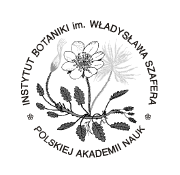 INSTYTUT CHEMII FIZYCZNEJ PAN
INSTYTUT CHEMII FIZYCZNEJ PAN
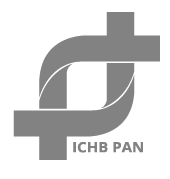 INSTYTUT CHEMII ORGANICZNEJ PAN
INSTYTUT CHEMII ORGANICZNEJ PAN
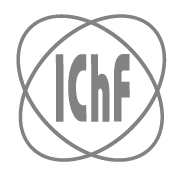 INSTYTUT FILOZOFII I SOCJOLOGII PAN
INSTYTUT FILOZOFII I SOCJOLOGII PAN
 INSTYTUT GEOGRAFII I PRZESTRZENNEGO ZAGOSPODAROWANIA PAN
INSTYTUT GEOGRAFII I PRZESTRZENNEGO ZAGOSPODAROWANIA PAN
 INSTYTUT HISTORII im. TADEUSZA MANTEUFFLA POLSKIEJ AKADEMII NAUK
INSTYTUT HISTORII im. TADEUSZA MANTEUFFLA POLSKIEJ AKADEMII NAUK
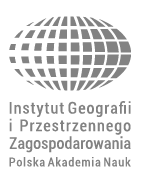 INSTYTUT JĘZYKA POLSKIEGO POLSKIEJ AKADEMII NAUK
INSTYTUT JĘZYKA POLSKIEGO POLSKIEJ AKADEMII NAUK
 INSTYTUT MATEMATYCZNY PAN
INSTYTUT MATEMATYCZNY PAN
 INSTYTUT MEDYCYNY DOŚWIADCZALNEJ I KLINICZNEJ IM.MIROSŁAWA MOSSAKOWSKIEGO POLSKIEJ AKADEMII NAUK
INSTYTUT MEDYCYNY DOŚWIADCZALNEJ I KLINICZNEJ IM.MIROSŁAWA MOSSAKOWSKIEGO POLSKIEJ AKADEMII NAUK
 INSTYTUT PODSTAWOWYCH PROBLEMÓW TECHNIKI PAN
INSTYTUT PODSTAWOWYCH PROBLEMÓW TECHNIKI PAN
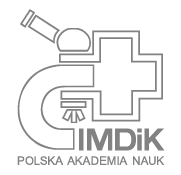 INSTYTUT SLAWISTYKI PAN
INSTYTUT SLAWISTYKI PAN
 SIEĆ BADAWCZA ŁUKASIEWICZ - INSTYTUT TECHNOLOGII MATERIAŁÓW ELEKTRONICZNYCH
SIEĆ BADAWCZA ŁUKASIEWICZ - INSTYTUT TECHNOLOGII MATERIAŁÓW ELEKTRONICZNYCH
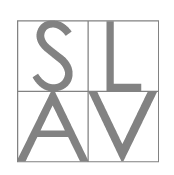 MUZEUM I INSTYTUT ZOOLOGII POLSKIEJ AKADEMII NAUK
MUZEUM I INSTYTUT ZOOLOGII POLSKIEJ AKADEMII NAUK
 INSTYTUT BADAŃ SYSTEMOWYCH PAN
INSTYTUT BADAŃ SYSTEMOWYCH PAN
 INSTYTUT BOTANIKI IM. WŁADYSŁAWA SZAFERA POLSKIEJ AKADEMII NAUK
INSTYTUT BOTANIKI IM. WŁADYSŁAWA SZAFERA POLSKIEJ AKADEMII NAUK







